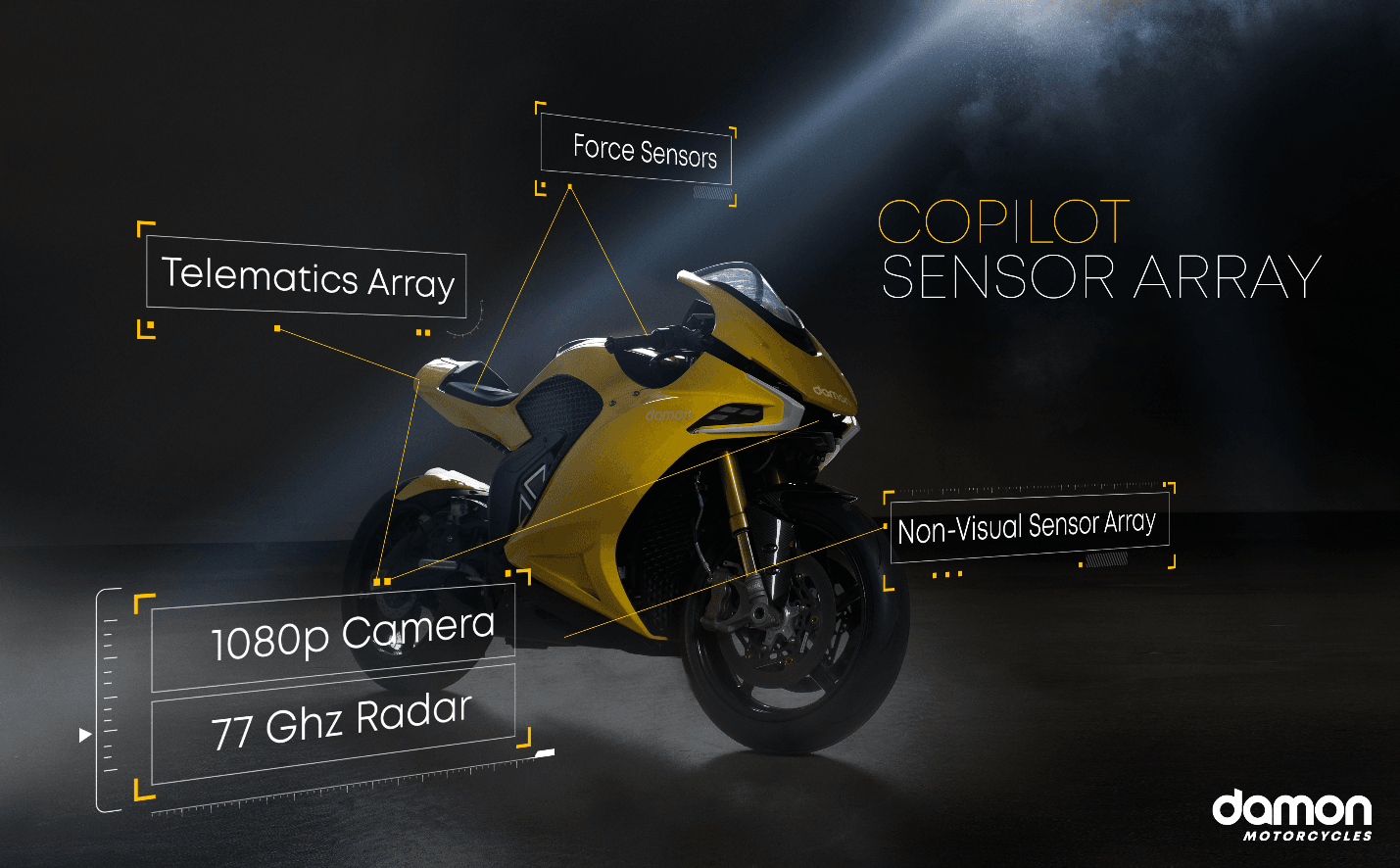Safer rides on superbikes with situationally-aware operating systems. Plus, autonomous vehicles that combine lasers with radar and camera sensors …
At the CES 2020 in Las Vegas, Damon Motorcycles announced that its CoPilot advanced warning system will be powered by BlackBerry’s QNX technology across its entire line-up of advanced electric motorcycles.

Said Jay Giraud, CEO of Damon Motorcycles: “We’re on a mission to unleash the full potential of personal mobility for the world’s commuters. To address this, we spent the last three years developing an AI-powered, fully connected, e-motorcycle platform that incorporates our proprietary CoPilot 360-degree warning system. By building it on BlackBerry’s best-in-class technology that is safety certified, Damon motorcycles will be the safest, most advanced electric motorcycle in the market.”
Said Grant Courville, VP, Product Management and Strategy, BlackBerry QNX: “Damon’s new Hypersport Pro limited-edition superbike features an advanced collision warning system. We’re absolutely thrilled to have them in our booth and look forward to showing off the highly-secure software that delivers enhanced situational awareness and increased peace of mind for riders.”
BlackBerry’s QNX embedded real-time operating system (RTOS) is part of the wave of next-generation mobility systems that provide a safe and secure platform for connected vehicles as well as in medical, industrial automation, robotics, energy, defense and aerospace applications.
At the show, global automotive software company Renovo also announced a collaboration with Blackberry QNX to jointly develop and market safety-critical data management solutions for use in the next generation of connected and autonomous vehicles.

As part of the partnership, BlackBerry’s QNX ISO 26262 RTOS will integrate with Insight, Renovo’s award-winning intelligent automotive data platform that accelerates development cycles, improves product performance and reduces operational costs for R&D and production fleets.
The BlackBerry QNX-Renovo partnership will deliver an innovative Advanced Driver-Assistance System & Autonomous Vehicle development platform, combining over 45 years of experience and deep knowledge of embedded systems, highly scalable software platforms and mission-critical safety systems. The companies will reveal some of the new features created through their partnership at the show.
Watch out for Lidar innovations
Meanwhile, Bosch is making the first long-range light-detection and-ranging (lidar) sensors production-ready for automotive use. This laser-based distance measurement technology is critically useful for driving functions at SAE Levels 3 to 5.
The new Bosch sensor will cover both long and close ranges—on highways and in the city. By exploiting economies of scale, Bosch wants to reduce the price for the sophisticated technology and render it suitable for the mass market. “By filling the sensor gap, Bosch is making automated driving a viable possibility in the first place,” says Bosch management board member Harald Kroeger.
Lidar is an essential element in ensuring safety in automated driving. We can think of the laser as a third eye: in lidar systems, the sensor emits laser pulses and captures the laser light that is scattered back. The system then calculates distances based on the measured time it takes for the light to bounce back. As a result, the laser-based distance measurement tool can reliably detect even non-metallic objects at a great distance, such as rocks on the road. This means there is plenty of time to initiate driving maneuvers such as braking or swerving.
Bosch has ascertained that only the parallel deployment of three sensor principles (lida, radar and cameras) ensures that automated driving will offer maximum safety when it is rolled out. For example, if a motorcycle approaches an automated vehicle at high speed at a junction, lidar is needed in addition to camera data and radar to ensure the reliable sensing of the two-wheeler.
In this instance, radar can struggle to detect the bike’s narrow silhouette and plastic fairings. Moreover, a camera sensor can always be dazzled by harsh light falling on it. As such, there is a need for radar, camera, and lidar, with the three technologies complementing each other perfectly and delivering reliable information in every driving situation.
Because Bosch can draw on its sensor expertise and systems know-how in the fields of radar and camera technology when developing the lidar, the company can ensure that all three sensor technologies dovetail with each other. Bosch’s long-range lidar will not only fulfill all safety requirements for automated driving, it will also enable automakers to efficiently integrate the technology into a very wide range of vehicle types in the future.
